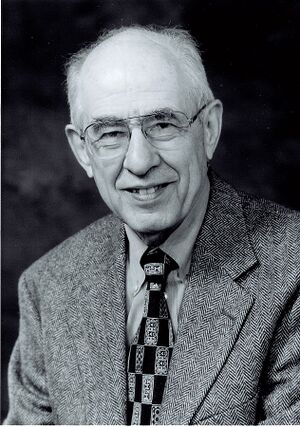Hilary Putnam (nonfiction)
Hilary Whitehall Putnam (July 31, 1926 – March 13, 2016) was an American philosopher, mathematician, and computer scientist, and a major figure in analytic philosophy in the second half of the 20th century. He made significant contributions to philosophy of mind, philosophy of language, philosophy of mathematics, and philosophy of science. At the time of his death, Putnam was Cogan University Professor Emeritus at Harvard University.
He was known for his willingness to apply an equal degree of scrutiny to his own philosophical positions as to those of others, subjecting each position to rigorous analysis until he exposed its flaws. As a result, he acquired a reputation for frequently changing his own position.
In philosophy of mind, Putnam is known for his argument against the type-identity of mental and physical states based on his hypothesis of the multiple realizability of the mental, and for the concept of functionalism, an influential theory regarding the mind–body problem.
In philosophy of language, along with Saul Kripke and others, he developed the causal theory of reference, and formulated an original theory of meaning, introducing the notion of semantic externalism based on a famous thought experiment called Twin Earth.
In philosophy of mathematics, he and his mentor W. V. Quine developed the "Quine–Putnam indispensability thesis", an argument for the reality of mathematical entities, later espousing the view that mathematics is not purely logical, but "quasi-empirical".
In the field of epistemology, he is known for his critique of the well known "brain in a vat" thought experiment. This thought experiment appears to provide a powerful argument for epistemological skepticism, but Putnam challenges its coherence.
In metaphysics, he originally espoused a position called metaphysical realism, but eventually became one of its most outspoken critics, first adopting a view he called "internal realism", which he later abandoned. Despite these changes of view, throughout his career he remained committed to scientific realism, roughly the view that mature scientific theories are approximately true descriptions of ways things are.
In the philosophy of perception Putnam came to endorse direct realism, according to which perceptual experiences directly present one with the external world. In the past, he further held that there are no mental representations, sense data, or other intermediaries that stand between the mind and the world. By 2012, however, he rejected this further commitment, in favor of "transactionalism", a view that accepts both that perceptual experiences are world-involving transactions, and that these transactions are functionally describable (provided that worldly items and intentional states may be referred to in the specification of the function). Such transactions can further involve qualia.
In his later work, Putnam became increasingly interested in American pragmatism, Jewish philosophy, and ethics, thus engaging with a wider array of philosophical traditions. He also displayed an interest in metaphilosophy, seeking to "renew philosophy" from what he identifies as narrow and inflated concerns.
Outside philosophy, Putnam contributed to mathematics and computer science. Together with Martin Davis he developed the Davis–Putnam algorithm for the Boolean satisfiability problem and he helped demonstrate the unsolvability of Hilbert's tenth problem.
He was at times a politically controversial figure, especially for his involvement with the Progressive Labor Party in the late 1960s and early 1970s.
In the News
Fiction cross-reference
Nonfiction cross-reference
External links:
- Hilary Putnam @ Wikipedia
